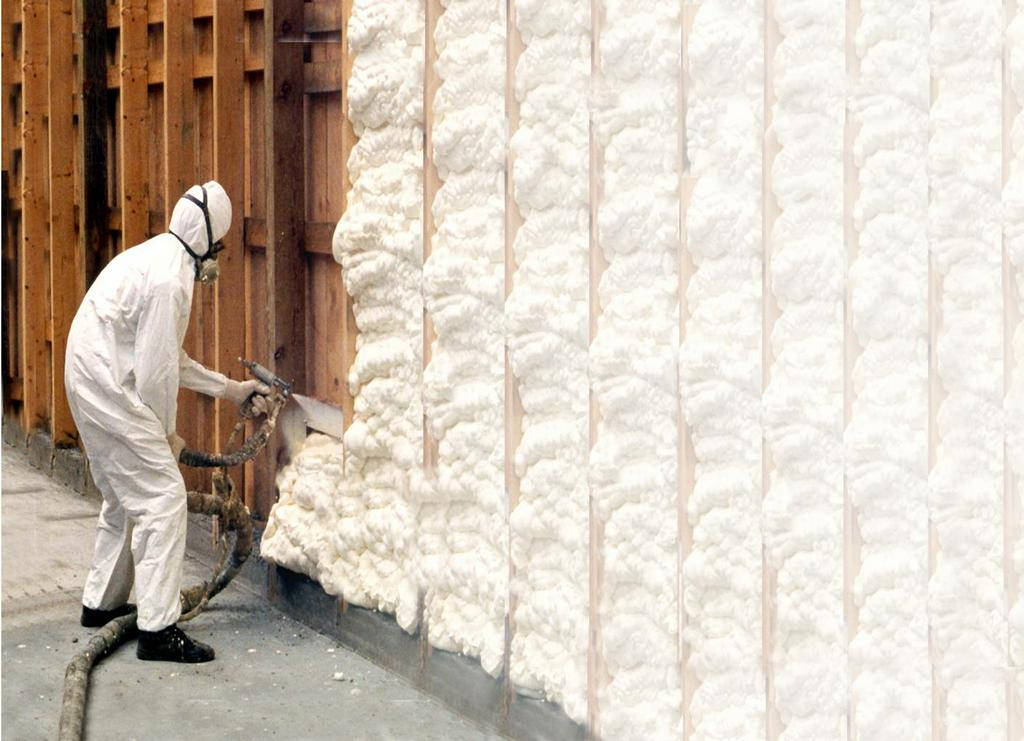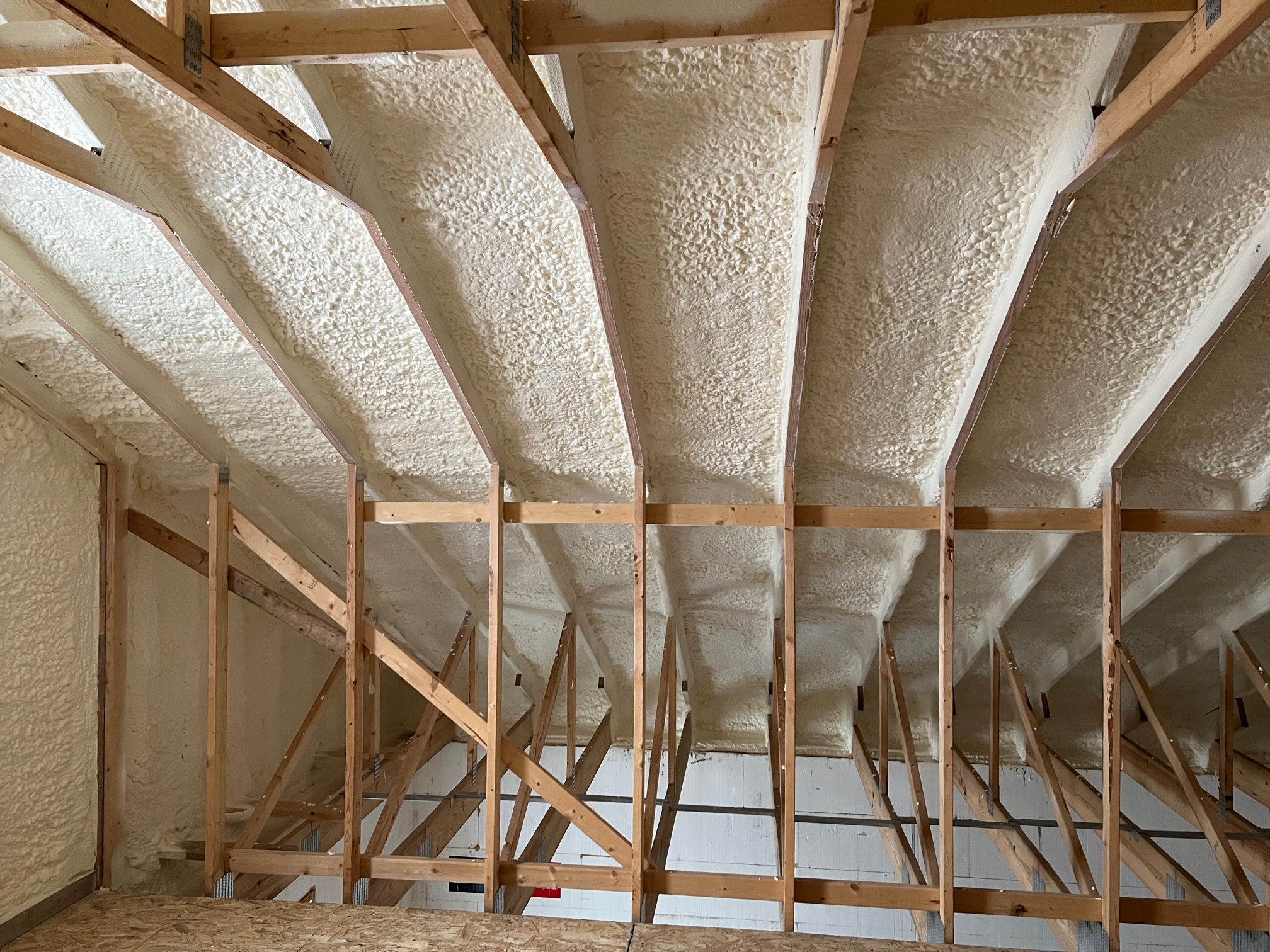Frequently Asked Questions Concerning Spray Foam Installation and Use
Frequently Asked Questions Concerning Spray Foam Installation and Use
Blog Article
Exactly How Spray Foam Can Improve Energy Effectiveness in Any Type Of Building
Spray foam insulation has arised as a crucial solution for boosting power effectiveness across various structure types. As residential or commercial property owners progressively look for lasting remedies, the ramifications of spray foam insulation prolong past mere utility financial savings.
Understanding Spray Foam Insulation
Spray foam insulation is progressively identified for its premium thermal efficiency and convenience in numerous applications. Made up largely of polyurethane, this insulation product is used as a liquid that increases upon call, filling up gaps and creating a seamless obstacle. This distinct property allows spray foam to satisfy irregular surfaces, making it a suitable choice for both industrial and property structures.

Application of spray foam insulation is normally done by skilled professionals utilizing specialized tools, ensuring optimum efficiency and safety and security - Spray Foam. The healing process is quick, permitting fast setup and minimal disturbance. Therefore, spray foam insulation is increasingly being used in brand-new construction and retrofitting jobs because of its ability to enhance architectural stability while boosting general power efficiency in structures
Benefits of Energy Performance
Power efficiency plays an essential role in reducing functional costs and reducing environmental influence across different industries. By enhancing power usage, property owners and organizations can achieve substantial financial savings on utility expenses, which directly boosts monetary efficiency. Efficient energy usage suggests less reliance on nonrenewable fuel sources, therefore adding to a decrease in greenhouse gas exhausts and promoting an extra lasting environment.
In addition, energy-efficient structures commonly experience boosted home worths. As energy prices increase and sustainability becomes a priority for customers, homes with boosted power effectiveness attributes are a lot more appealing on the market. This fad encourages financial investment in energy-saving innovations, which can better drive development and economic growth.
In addition to financial and environmental benefits, energy effectiveness can also improve the total convenience and health of interior areas. Correct insulation and effective heating and air conditioning systems help keep regular temperature levels, minimizing drafts and humidity degrees, which consequently can bring about better indoor air high quality.
Inevitably, the advantages of energy performance extend past prompt cost savings, cultivating a resilient economic climate, advertising environmental stewardship, and improving the quality of life for occupants in any kind of building.
Exactly How Spray Foam Functions
Typically used as a liquid, spray foam broadens swiftly upon call with surface areas, creating a solid barrier that efficiently seals fractures and gaps. This one-of-a-kind residential or commercial property is due to its chemical structure, mainly including polyols and isocyanates, which respond when blended to create a foam that fills up voids and sticks to numerous materials, including metal, concrete, and wood.
Once used, the foam expands to several times its original volume, making sure a limited seal that prevents air leak. This process considerably decreases thermal connecting, which occurs when heat transfers via materials, causing energy loss. The foam's high R-value, an action of thermal resistance, contributes to boosted insulation by decreasing heat transfer in between the exterior and interior settings.
Additionally, spray foam is resistant to dampness and bugs, further improving its effectiveness in keeping power performance. Its application can be tailored to various areas, consisting of attics, walls, and crawl rooms, enhancing insulation throughout a structure. Spray Foam. Generally, the cutting-edge style and application approach of spray foam make it a reliable remedy for boosting energy efficiency in any type of framework, bring about decreased why not try these out power costs and a more sustainable constructed environment

Applications in Various Structures
Various applications of spray foam insulation can be located across different structure types, boosting energy efficiency and comfort. In household homes, spray foam is frequently made use of in walls and attics to create a seamless obstacle against air leakages, dramatically reducing heating and cooling demands. This application is specifically helpful in older homes, where standard insulation may be inadequate.
In industrial buildings, spray foam insulation is applied to roof covering systems and exterior wall surfaces, which helps to enhance thermal efficiency and secure versus moisture breach. Its lightweight nature makes it an ideal option for retrofitting existing structures without adding substantial weight. In addition, spray foam can be utilized in industrial settings to protect pipelines and tank, maintaining temperature control for sensitive products.
Institutional buildings, such as schools and healthcare facilities, gain from spray foam insulation by ensuring a consistent interior climate that supports occupant convenience and health and wellness. The versatility of spray foam permits it to adjust to different structure forms and dimensions, making it a preferred option for engineers and building contractors looking for efficient insulation solutions. Overall, spray foam insulation acts as a crucial component in accomplishing energy-efficient buildings across all markets.
Long-Term Cost Savings
Spray foam insulation supplies substantial long-lasting cost savings for structure proprietors and passengers by lowering energy usage and lowering energy bills. By offering a superior air seal, spray foam reduces the seepage of outside air, therefore improving the thermal efficiency of a building. This leads to more effective home heating and cooling procedures, which can bring about significant reductions in power expenses over time.
In addition to prompt financial savings on energy costs, the longevity and durability of spray foam insulation add to its monetary benefits. Unlike traditional insulation materials, which might sag, work out, or wear away, spray foam maintains its efficiency for years, minimizing the requirement for regular replacements or repair work. This long life converts to decrease upkeep expenses and less interruption for owners.
Furthermore, buildings geared up with spray foam insulation typically enjoy a rise in residential property value, making them more attractive to prospective buyers or tenants. As energy effectiveness becomes progressively prioritized, properties with efficient insulation services stand apart on the market. Eventually, the combination of spray foam insulation not only improves convenience yet also stands for a calculated financial investment that yields considerable monetary advantages over the lengthy term.
Conclusion
To conclude, spray foam insulation acts as an important part in enhancing power performance throughout diverse building kinds. Its capability to create a smooth barrier versus check this air leak, integrated with high R-values and moisture-resistant homes, dramatically minimizes energy intake and connected expenses. The application of spray foam not only adds to regular interior temperatures yet also increases building worth, emphasizing its duty as a sensible investment for both commercial and property residential properties.
Spray foam insulation has arised as an essential service for boosting energy performance across various structure types. Spray Foam. As a result, spray foam insulation is significantly being utilized in brand-new building and retrofitting projects due to its capacity to enhance architectural honesty while improving general energy performance in buildings
On the whole, the innovative style and application approach of spray foam make it a reliable remedy for enhancing energy efficiency in any kind of framework, leading to lowered energy prices and an extra sustainable check my reference developed environment.
Many applications of spray foam insulation can be discovered throughout numerous structure kinds, improving power efficiency and comfort.In verdict, spray foam insulation offers as an essential element in improving power efficiency throughout varied structure types.
Report this page